Garlic plants are heavy feeders. The reason is that Garlic takes a long time to mature and get ready for the crop. With this, you need to feed your Garlic plant with the right fertilizer since you cultivated it. The best fertilizers of Garlic plants will be high in nitrogen, including blood food or an artificial source of nitrogen. Let’s check out the best fertilizer for Garlic.
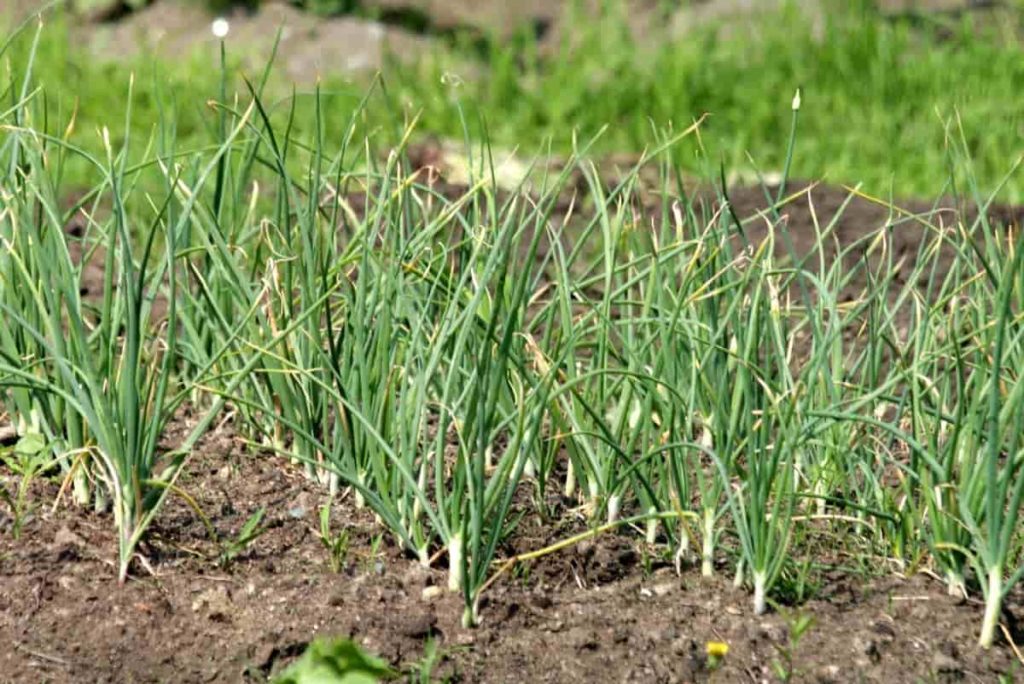
Your chosen fertilizer also needs to include all the nutrients that your Garlic plant feels deficient in. In this case, it helps in testing the soil so that you can assess the actual condition of the soil and what your plant needs specifically. To guarantee the strong growth of Garlic, provide it with specific nutrients needed including carbon, oxygen, hydrogen, phosphorus, magnesium, potassium, nitrogen, and sulfur.
Soils that have low nutritional levels can increase their fertility by adding fertilizers such as granules or liquid soluble. Soil amendments like compost or manure to fertilize your Garlic should be planted in the late summer or early fall before planting Garlic cloves. This will ensure that organic material is added to the soil and the Garlic starts releasing its nutrients before growing.
Best fertilizer for Garlic
Compost manure for Garlic
It is important to remember that most composts and manures are low in nitrogen and hence require a huge amount to meet the full needs of Garlic. Some farmers use fertilizer amendments to meet their phosphorus, potassium, and sulfur (as well as micronutrients) requirements and then add fertilizer to meet their nitrogen requirements. Whatever the way fertilizing may be, the overall goal is to try to feed Garlic with maximum nutritional levels throughout the growing season.
Compost
An aged compost is generally a mixture of green and brown compost. Make a pile of equal layers of brown and green composting material. Ensure that the material is cut or cut into small pieces to speed up the degeneration. Sprinkle water on each layer; you can also add compost intake to your water. Turn the pile every three days using an aerator tool. When the compost is dark and no longer smells, it’s ready to apply to your plants.
Well-rotten manure
Amend the soil with aged compost or well rotten manure before applying Garlic cloves. Proper preparation with fertilizer eliminates the need for additional fertilization for Garlic.
Fresh cattle and horse dung
Organic manure for Garlic is made under the predecessor. In particular, fresh cattle and horse dung is used in doses of 40 to 80 tons per hectare.
In case you miss this: Garlic Planting Questions and Answers (FAQs)
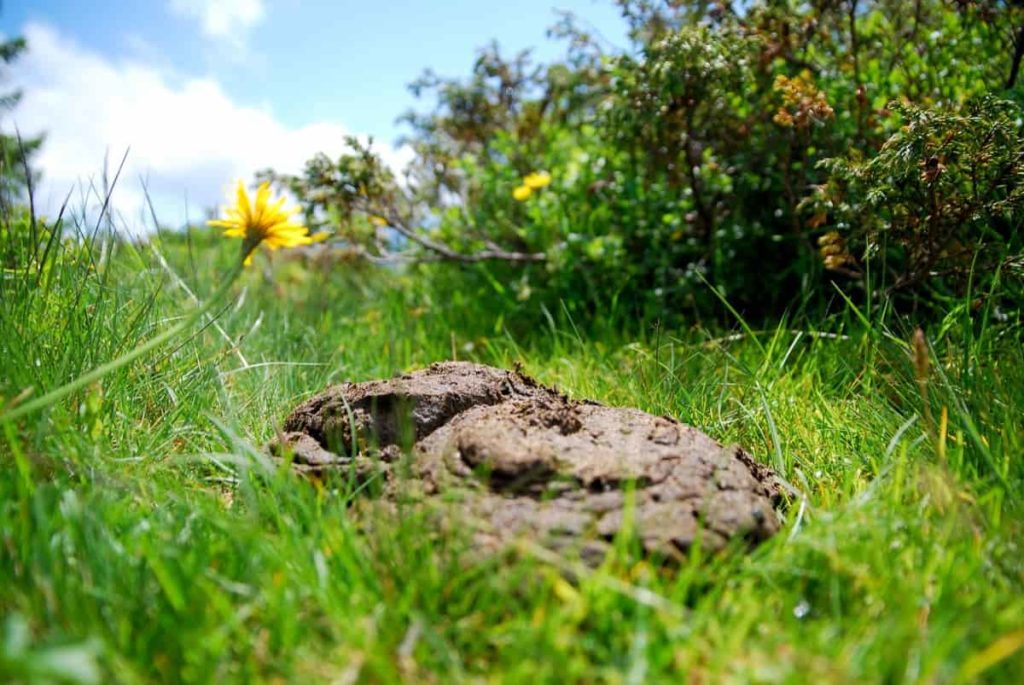
Pig manure
If necessary, pig manure is applied only under the previous crop in the dose of 40 tons per hectare.
Goat manure
Goat manure is as dry as sheep manure as cow manure or horse manure. It has less odor and is easy to work with and spread. It also makes fertilizer more quickly. Goat manure contains more nitrogen than horse and cow manure.
Half-decomposed manure of cattle
If necessary, half-decomposed manure of cattle in 40 to 60 tons per hectare can be done after removing the forerunner but only for initial plowing. Fresh manure is also used in this case in poor sandy loamy soil.
Organic fertilizers for Garlic
- Fish emulsion – Other organic farmers use fish emulation once a month during spring till a month before harvesting.
- Blood meal – The blood meal fertilizer can be dug into the soil before planting Garlic for organic slow nitrogen release.
- Humus – Humus can be applied on the first deep cultivation in doses of 30 to 40 tons per hectare before the Garlic is planted.
- Bone meal – Adding bone meal when planting will encourage healthy bulb growth, as it will slowly release nutrients to feed your Garlic roots all winter.
Liquid fertilizers for Garlic
Seaweed and fish emulsion mixture – The best fertilizer for bulb development is 1 tablespoon liquid seaweed mix and 1 tablespoon fish emulsion mixed with 1 gallon of water. Do not use nitrogen-heavy fertilizers on Garlic, as they will encourage much high growth and small bulb growth.
Homemade fertilizers for Garlic
Coffee grounds
If you have any leftover coffee grounds, a handful on top of the clove will help it grow, as Garlic likes a pH of acidic soil. But, if you are not growing Garlic near the pavement, foundation, or rocky area, it should not be a matter of concern. Cover the cloves with clay and a little mulch to keep them safe in winter.
Epsom salt
Scattering a couple of tablespoons of Epsom salt on every square meter of the planting bed can increase your Garlic strength.
Wood Ash
Fresh ash from bonfire night before planting can be worked in the ground. Feed again in mid-spring with seaweed or comfrey to top up the growth, but if your soil is in reasonable health, you don’t have to do anything to please Garlic. Garlic responds very well to wood ash, which can be kept under pre-planting cultivation in 150 to 200 kg per hectare dose.
In case you miss this: Garlic Growing Tips, Tricks, Ideas, and Secrets

Natural fertilizers for Garlic
Straw – Mulch the Garlic patch heavily, 4 to 6 inches thick, with straw or leaves. This mulch will protect the tender cloves during winter.
Commercial fertilizers for Garlic
Granular fertilizer
This dry fertilizer is one you can apply using a spreader. One of the advantages of this type of use is that it lets you observe the actual fertilizer. This allows you to see the specific place where you applied it and the place where the request is badly needed. It can be slow-release, release steadily for long periods, and require the use of fertilizer once or twice a year, or need to be released immediately, which provides nitrogen immediately, which needs to be translated into more frequent use.
Liquid fertilizer
If you want to use this type, make sure you dilute it before the application. This is a good choice as you can apply it easily beside the plant can absorb it quickly.
Spikes
This fertilizer comes in the form of a stick. It is slow-release and it is easy to use and there is something you can apply directly to the ground.
NPK ratio
Nitrogen encourages leaf growth and subsequent bulb growth. Avoid giving too much water or overirrigation to the Garlic plant as it can remove nutrients. Garlic has more than medium demand for nitrogen. About a quarter to one-third of recommended nitrogen should be added in the early fall before planting, use organic sources such as 5-10-15 or 10-10-10 or blood food.
In case you miss this: Growing Garlic In Balcony – A Beginners Guide
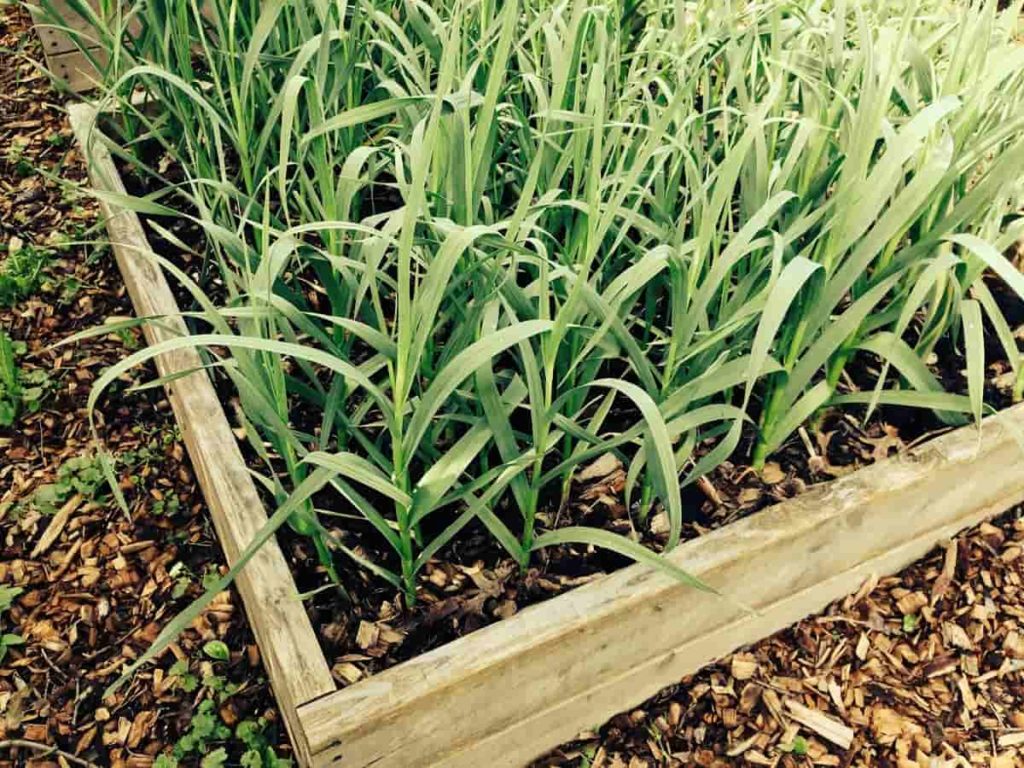
The remainder of the nitrogen should be top-dressed in the spring after the shoot is 4 inches to 6 inches long. Side dress Garlic with about 1 pound of ammonium nitrate per 100 feet row in late February or early March. Avoid nitrogen applications after the first week in April to prevent delayed bulbing. Symptoms of nitrogen deficiency include yellowing of old leaves and leaf tips, common yellowing of the plant, and low yield.
Take soil tests before planting to determine the needs of phosphorus and potassium. Add all the phosphorus and potassium fertilizers before planting. Symptoms of lack of phosphorus include dark green to purple leaves and stunted growth. Symptoms of lack of potassium include minor scorching of old leaves.
Calcium and magnesium can be low in acid soil. The need for these elements can be met by generally using dolomitic lime and following the recommendations of lime. Sulfur is a major component of compounds that are believed to be among the two characteristics of Garlic. Applying sulfur does not seem to increase yield, but there is active interest in determining how sulfur fertilizer can affect Garlic flavor and medicinal compounds. The addition of fertilizer or other types of organic modifications will help ensure that micronutrient supply is sufficient.
Garlic fertilizer schedule
Fertilizing should be divided into three separate applications. The first will be before planting to help in the growth of roots. The second will be to encourage the growth of leaves and bulbs during spring. And the third after 3 to 4 weeks. If you have decided to test the soil, add compost to the planting bed first. If there is no soil test, start composting Garlic with a mixture of balanced fertilizer.
In case you miss this: Growing Garlic Hydroponically, Nutrients for Garlic Plants
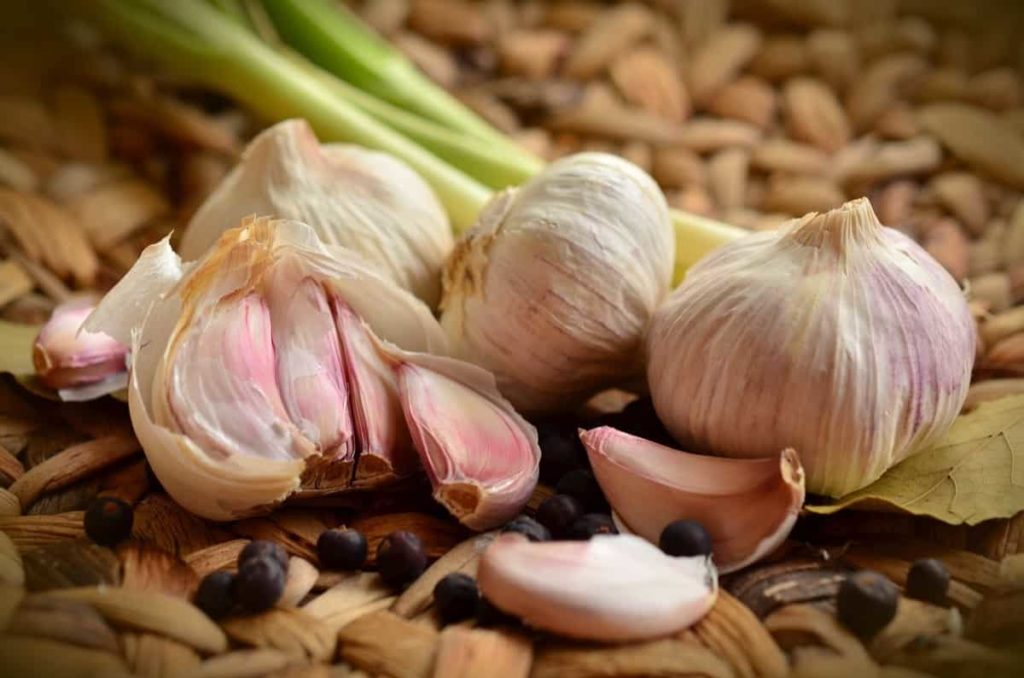
Plant Garlic when applying it as it can help in the growth of its root and leaves. It also helps in using bone meal only once when planted. The reason is that flowers can grow. Remove any stalks of flowers from the Garlic plant to promote proper bulb development. If you have Garlic applied during the fall, the best time to apply compost will be in spring. You can do this by broadcasting fertilizer or side-dressing it throughout the bed. Make sure your chosen fertilizer is rich in nitrogen.
For you to side-dress, let your fertilizer work about an inch below Garlic or around three to four inches. Make the fertilizer application every 3 to 4 weeks. You should also fertilize the Garlic around mid-May or before the bulbs swell. Avoid fertilizing the plant with nitrogen-rich foods after May is over as it can only stunt the size of the bulb.
How to fertilize Garlic in pots
Proper soil medium is important for planting Garlic in pots. It cannot maintain too much moisture nor can it be too dry, and enough organic nutrients should be available for bulbs. A good combination of peat, perlite, or vermiculite, and potting mix or compost with a small portion of the builder’s sand will provide you with the necessary drainage, moisture retention, and nutrients to grow Garlic in the containers.
When planting Garlic in the pots, combine with 10-10-10 fertilizer to loosen potting soil. When Garlic greens start sprouting from the soil in spring, you can start fertilizing your plants every few weeks. Try using 5-10-15 NPK fertilizers. Never add more than instructed because you can burn your plants. Sprinkle the grains around your plants and mix them with your hand in the soil. Another option is to use the water-soluble fertilizer and water your plants with fertilizer.
In case you miss this: Growing Garlic (Lahsun); Planting; Care; Harvesting
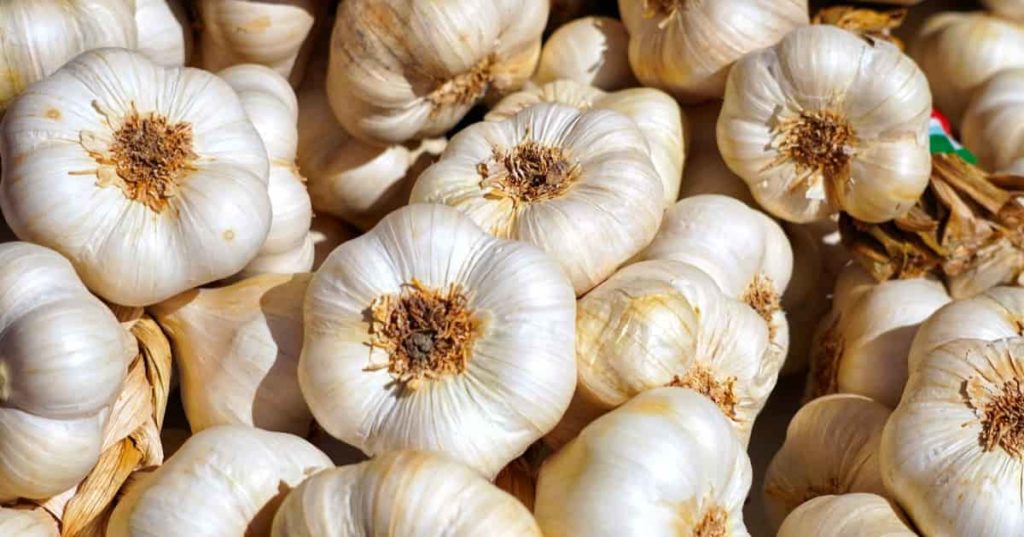
Commonly asked questions about fertilizers for Garlic
Is Osmocote good for Garlic?
High nitrogen fertilizer that decomposes gradually, such as Osmocote and blood meal, is the best choice for Garlic cultivation. Make sure you add fertilizer in early spring and before the bulb starts to swell.
Is calcium nitrate good for Garlic?
Calcium nitrate fertilizer can be used to prevent calcium deficiency of the Garlic plant. Calcium nitrate or ammonium nitrate is a favored source. Half of the nitrogen should be applied as soon as Garlic plants start growing in spring. The rest of the nitrogen should be consumed in two to three side dresses at intervals of three weeks.
Does Garlic like high nitrogen?
Garlic must not be overfertilized with nitrogen as it can lead to higher growth. Like other vegetable crops, too much upward growth often leads to smaller bulbs as plants focus heavily on leaf production and not storing energy below ground.
- How to Grow Hibiscus from Flower
- Plantation Ideas for Home Decoration: A Beginners Guide
- Flower Garden Designs and Layouts for Beginners
- Planting and Spacing Techniques in Papaya: A Beginner’s Guide
- Growing Gold: Essential Techniques for Planting Pineapples
- How to Make Kalanchoe Plant Bushy: Home Remedies and Solutions
- 11 Reasons Why Your Gardenia is Not Blooming: Home Remedies and Solutions
- Eco Elegance: The Guide to Designing a Drought-Tolerant Landscape
- Gardening on a Slope: Strategies for Hillside Landscaping
- Nourish and Flourish: Top Organic Mulches for Thriving House Plants
- Everything You Want to Know about Indian Mogra Flower: Discover Uses and Growing
- Green Thumb Success: Expert Tips for Cultivating Greenhouse Pumpkins All Year Round
- Maximize Growth & Flavor: The Ultimate Guide to Companion Planting in Herb Gardens
- How to Control Rhododendron Problems Naturally: Home Remedies and Organic Ways to Fix Them
- Natural Magic: The Remarkable Benefits of Cinnamon for Plants
- Best Steps to Revive Dying Tulip with Natural and Organic Treatment
- 10 Reasons Why Your Angel Trumpet is Not Blooming: Remedies and Treatment
- How to Fix Periwinkle Leaf and Flower-Related Problems: Natural Remedies and Solutions
- How to Fix Zinnias Leaf and Flower Problems: Discover Natural and Home Remedies
- Organic Steps to Induce Lemon Tree Flowers: A Comprehensive Guide
- Bloom Booster: Crafting the Perfect Homemade Bougainvillea Fertilizer
- Optimizing Growth: A Guide to Applying NPK Fertilizer for Potted Plants
- 10 Best Homemade Fertilizers for Rubber Plant: DIY Recipes and Application Method
- How to Boost Female Pumpkin Flowers: Effective Steps for More Flowers and High Yields
- Transform Your Indoor Garden: Top Benefits of Pink Salt for Houseplants
- 10 Best Homemade Fertilizers for Peacock Plants (Calathea): Easy DIY Guide
- Unlock Blooms: 9 Reasons Why Your Potted Chrysanthemum is Not Blooming
- 8 Reasons Why Your Potted Hibiscus is Not Blooming: Fix it with Simple Solutions
- Unlock Blooms: 9 Key Reasons Your Potted Frangipani Won’t Flower
- 10 Reasons Why Is My Ice Plant Not Blooming: Remedies and Treatment
- 10 Reasons Why My Potted Hydrangea Not Blooming: Treatment and Remedies
- 10 Reasons Why is My Wisteria Not Blooming: Remedies and Treatment
- 10 Reasons Why is My Goldfish Plant Not Blooming: Remedies and Treatment
- Maximize Your Space: Ultimate Guide to Balcony Gardening with Grow Bags
- 10 Reasons Why Your Iris is Not Blooming: Remedies and Treatment
- 10 Reasons Why Your Anthurium Plant is Not Blooming: Treatment and Remedies